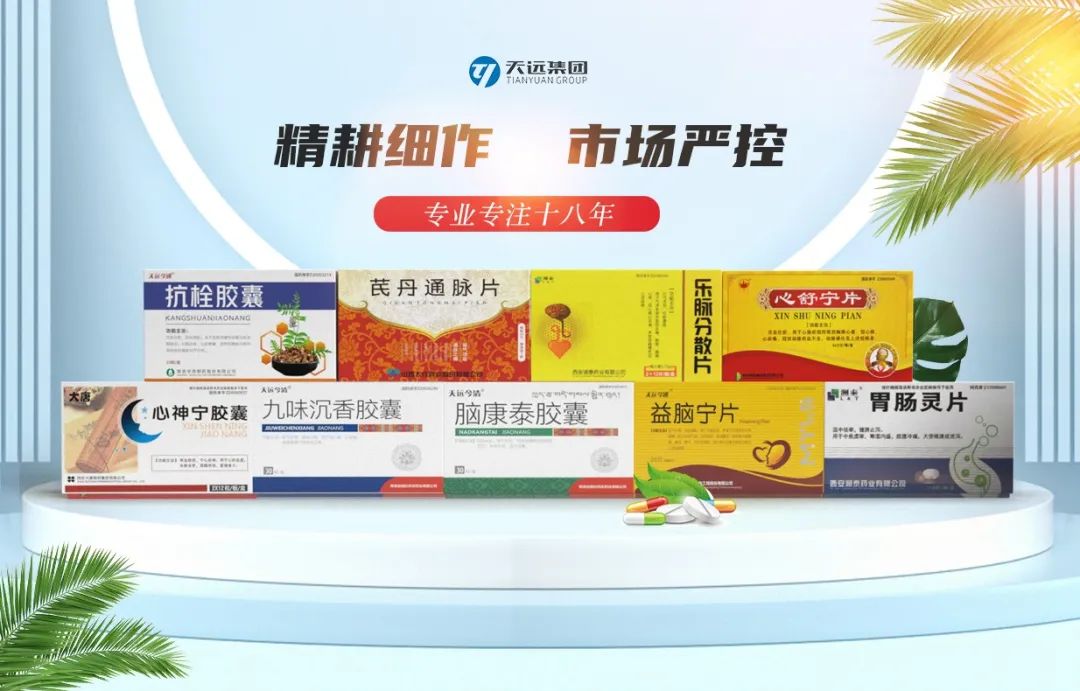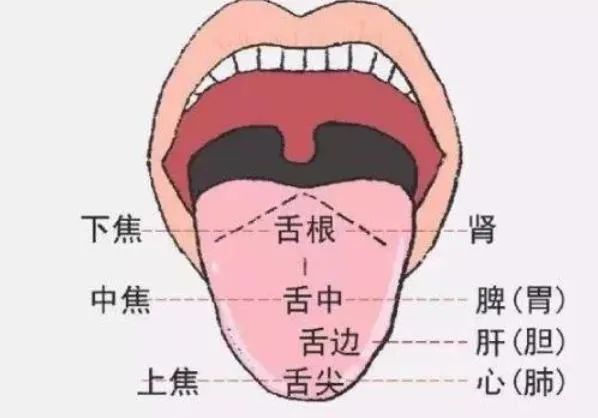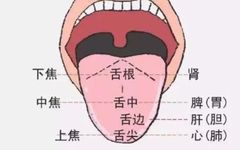


Traditional Chinese Medicine Tongue Diagnosis

The tongue is a mirror of the body’s health, closely linked to the internal organs and meridians. Changes in the five zang and six fu organs can be reflected on the tongue, hence it is referred to as the “external sign of the internal organs.”
Tongue diagnosis is a technique that allows one to glimpse the secrets of the body. Whether it is blood deficiency, qi deficiency, phlegm-dampness, or blood stasis, can be discerned at the moment one sticks out their tongue. The most envied tongue type is the “Peach Blossom Tongue,” which is typically a light red color resembling a peach blossom, with a thin white coating. This desirable tongue type is referred to as the “Peach Blossom Tongue.”
Tongue diagnosis, also known as observing the tongue, is one of the important methods for understanding the physiological functions and pathological changes of the body by observing the changes in the tongue’s appearance. The observation is conducted in the order of the tongue tip, tongue body, tongue root, and tongue sides. First, observe the tongue body, then the coating, for about 30 seconds. If the initial observation is unclear, the patient can rest for 3-5 minutes before re-examining.
The tongue coating is a layer of substance on the surface of the tongue, including the coating quality and color. It is formed by the yang qi of the spleen and stomach transforming the essence of food and gathering on the tongue surface. In the Qing Dynasty, Zhang Xugu mentioned in the “Essentials of Treatise on Cold Damage – Differentiating Tongue Coating” that “the tongue coating arises from the qi generated in the stomach, and the stomach qi is produced by the heart and spleen. Therefore, healthy individuals often have a thin coating, which is the qi of the stomach, like the fine grass on the ground.” This indicates that the tongue coating can reflect a person’s physical state, and many diseases can be indicated through the tongue coating.
Have you ever carefully examined your tongue coating while brushing your teeth? Have you looked at the tongue coating of those around you? Which tongue coating is healthy or unhealthy? How can Traditional Chinese Medicine be applied for adjustment?


How TCM Views Tongue Coating

1. Tongue Coating – Observe Thickness
A normal tongue coating is thin, rooted, and closely adheres to the tongue surface as one entity. How to determine the thickness of the tongue coating? It is based on whether the tongue body is visible through the coating. If the color of the tongue body can be faintly seen through the coating, it is called “visible base,” indicating a thin coating; if the tongue body color cannot be seen through the coating, it is called “invisible base,” indicating a thick coating. Therefore, if you want to determine whether your tongue coating is thick, use this as a standard. If the coating is thick and obscures the tongue body color, how can one know the color of the tongue body? The tongue coating is generally not covered on the sides and tip of the tongue. In the case of a thick coating, we usually observe the color of the tongue body from the sides and tip.
TCM believes that the thickness of the tongue coating reflects the depth of pathogenic factors. A thin coating indicates a superficial condition, meaning when healthy, it is thin, and when ill, it is lighter and shallower, indicating a superficial condition. A thick coating indicates a deeper condition. In TCM, the distinction between superficial and deep refers to the location of the disease. The superficial condition is located externally, on the body surface; the deep condition is internal, involving the organs, meridians, qi, and blood. If during the course of the illness, a person’s tongue coating changes from thin to thick, it indicates that the disease has progressed from superficial to deep. Conversely, if the coating was originally thick and gradually becomes thinner, it indicates that the condition is improving. This is a dialectical and dynamic process that requires a unified analysis of movement and stillness. We cannot simply compare how thick the tongue coating is; it is not about who has a thicker coating than whom. It is essential to compare the dynamic changes of the tongue coating over a certain period, which is very important.
2. Tongue Coating – Observe Moisture and Dryness
Moisture and dryness refer to the degree of wetness. A normal tongue coating is moderately moist. Why is it moist? It is due to the nourishment of body fluids. If body fluids are deficient, it will become dry. Therefore, the moisture and dryness of the tongue coating actually reflect the existence of body fluids, indicating whether the body fluids have been damaged.
Generally speaking, a normal tongue coating is nourished by body fluids, but the amount is moderate. If it appears as if saliva is about to drip, it is not normal body fluid; that is a sign of dampness. If body fluids are damaged, and there is no moisture, the coating will become dry. In clinical practice, if a patient’s tongue was originally moist and then becomes dry, it indicates that their body fluids are gradually being damaged, and the condition is worsening. Conversely, if the tongue coating was dry and gradually becomes moist, it indicates that body fluids are gradually recovering, and the condition is improving.
3. Tongue Coating – Observe Decay and Greasiness
Decayed coating and greasy coating both refer to a relatively thick coating on the tongue surface. Both indicate internal conditions. If the tongue coating appears fine and dense, tightly adhering and difficult to scrape off, it is called greasy coating. If it appears coarse and loose, easily scraped off, sometimes resembling tofu dregs, it is called decayed coating.
So, what factors are generally associated with greasy and decayed coatings? First, it is related to phlegm; we often talk about tangible phlegm and intangible phlegm; second, it is related to dampness, which is water dampness; third, it is related to food stagnation, which refers to undigested food accumulation.
If the tongue coating is very thick and dirty, it generally indicates food stagnation. In addition to the characteristics of the tongue coating, the patient usually has a history of overeating or has a poor stomach, and even if they do not eat much, if their stomach is not good, they may experience bloating or abdominal pain, with belches that smell sour and undigested, and their stools may have a foul odor like rotten eggs. In such cases, the tongue coating is generally decayed. TCM believes that if food stagnation occurs, there is a very simple method to address it. That is to use Shenqu (God’s Grain), about 5-10g, boiled in water, which often has a good effect; this is what we refer to as decayed coating.
Generally, phlegm-dampness is associated with greasy coating, so phlegm should be resolved and dampness eliminated. Let’s consider the color of the coating: white greasy coating indicates white greasy phlegm, generally associated with cold dampness or cold phlegm. Some elderly patients with bronchitis often cough with a lot of phlegm, which is white or foamy, and the coating is white and greasy, indicating a cold condition, which is cold phlegm. If the tongue coating is greasy and yellow, it is called yellow greasy coating, indicating damp-heat or phlegm-heat. Therefore, cold phlegm should be warmed and transformed, while heat phlegm should be cleared and transformed.
4. Tongue Coating – Observe Shedding
Shedding refers to certain patients having areas on the tongue without coating, which is called shedding coating. Some have shedding in the middle, some on the sides, and there are different names for them. Some shedding occurs in patches, which is called patchy shedding; shedding in the middle of the tongue, which appears red like a chicken heart, is called chicken heart tongue; shedding at the front of the tongue with coating at the back is called front shedding; shedding at the back is called root shedding; even one side has coating while the other does not, which is called lateral shedding; and you may have heard of geographic tongue, where some children have patchy shedding with clear boundaries, resembling a map, which is called geographic tongue, and is generally rare in adults.
Geographic tongue may be related to malnutrition or parasitic infections in children, affecting the spleen and stomach function, ultimately impacting nutrient absorption. Therefore, if a child presents with geographic tongue, it may be due to parasites or malnutrition. Since the coating is formed by the spleen qi rising and the stomach qi steaming upward, if body fluids and stomach fluids are deficient, the tongue coating will shed.
If the entire tongue coating sheds, leaving the tongue surface smooth and shiny, it is called mirror tongue. It appears very clean, but it is actually a very bad sign, indicating stomach yin deficiency. TCM has a saying: “If there is stomach qi, there is life; if there is no stomach qi, there is death.” If the stomach qi is lost, the patient’s recovery will be poor. Therefore, if a patient has a very thick tongue coating, it should be gradually transformed; removing it all at once is not good. In TCM, it is essential for the tongue coating to have roots; if it has no roots, it is like spreading a pile of grass on a playground, as it is not grown, and scraping it off will remove it. There is also a situation regarding the authenticity of the tongue coating; if the coating is real, it indicates the presence of stomach qi; if the coating is false, it is merely piled on top, indicating a lack of stomach qi.

Tongue Coating Morphology Rhyme
Thick indicates phlegm-dampness, thin indicates superficial; greasy coating indicates external evil disturbance,
Slippery belongs to cold dampness, moist is normal, dry tongue indicates yin injury and body fluids are low.
White decayed indicates lung abscess, yellow decayed indicates stomach heat, tongue cracks indicate yin deficiency and vital qi is low,
Spotted and mottled indicate severe conditions, white mold in the mouth is difficult to treat.

TCM Tongue Coating Differentiation Method

The normal tongue coating of a healthy person is thin, white, and moist, with moderate moisture, neither slippery nor dry. Due to the strength and weakness of the patient’s stomach qi and the body’s cold and heat, various pathological tongue coatings can form. The following are common tongue coatings classified by color:
1. White Coating: Generally indicates a superficial condition or cold condition. A thin white and moist coating is the normal tongue coating of healthy individuals, while a thin white coating also indicates that the disease is at the surface and has not entered the interior. A thin white coating that is overly moist is often seen in superficial cold conditions. A thin white coating that is dry indicates a superficial heat condition or invasion of dry evil. A white thick and dry coating represents damp turbidity transforming into heat and injuring body fluids. A tongue covered with white coating that is not dry is called “powdery white coating,” indicating a pestilential disease. A white and dry coating is called “rough cracked coating,” often seen in warm heat diseases.
A pale tongue with a white and moist coating indicates a cold condition or cold damp condition. A white slippery and greasy coating indicates the presence of phlegm-dampness or dampness obstructing the spleen. A white slippery and decayed coating indicates heat accumulation in the stomach. If the coating is white like snowflakes and dry, it is called “snowflake coating,” indicating spleen cold. If the tongue and mouth are covered with a film, with moldy coating or ulcerated spots, it indicates a decline in stomach qi, and the internal organs are in a critical state.
2. Yellow Coating: Yellow coating indicates internal heat conditions. A thin yellow coating that is thick and dry indicates excessive internal heat, damaging body fluids. A yellow dry coating with prickles, and cracks on the tongue indicates extreme internal heat, severely damaging body fluids, and the organs are in a state of great heat. A yellow thick and greasy coating is often associated with phlegm-heat, food stagnation, or damp-heat accumulation. A yellow slippery and moist coating indicates a manifestation of yang deficiency.
3. Gray Coating: Indicates internal conditions. A gray thin and moist coating often indicates cold dampness obstructing the interior or phlegm retention. A gray dry coating indicates heat disease or yin deficiency with excessive fire.
4. Black Coating: Black coating is often a transformation from yellow or gray coating, indicating a very serious condition. A black dry coating indicates excessive heat and body fluid deficiency. A black dry coating on the tongue tip indicates excessive heart fire. A black slippery coating indicates extreme yang deficiency and excessive cold.


Case Study

Patient Li, 49 years old, female. Post-menopausal, has experienced burning and numbness in the mouth and tongue for four years, has visited multiple doctors, and no significant abnormalities were found. Western medicine considered it burning mouth syndrome and prescribed complex vitamins and vitamin E, but the effect was not ideal.
Upon initial diagnosis, the patient presented with numbness and burning in the mouth and tongue, morning bad breath, a sticky mouth, a tight feeling in the palate, significant thirst at night, abdominal bloating after eating slightly more, sensitivity to cold, excessive sweating on the forehead, hot palms and soles, feelings of heat, irritability, thin stools, frequent urination, pale tongue, white greasy coating, and a thin pulse.
Diagnosis: Spleen yang deficiency, liver qi stagnation transforming into fire.
Treatment principle: Warm yang, strengthen the spleen, regulate qi, clear virtual fire, and resolve stagnation as the basic treatment method.
Prescription: Modified Xiaozhuo Shangqing Decoction: Huang Qi (Astragalus), Chao Mai (Fried Wheat), Bai Zhu (White Atractylodes), Gui Zhi (Cinnamon Twig), Dang Shen (Codonopsis) etc. Instructed the patient to avoid raw, cold, and spicy foods during the medication period, engage in moderate exercise, and drink warm water.
After one month of medication, the burning sensation in the mouth and tongue significantly decreased, bad breath, thirst, and abdominal bloating symptoms disappeared; sensitivity to cold, excessive sweating on the forehead, and feelings of heat improved; still had slightly poor sleep, frequent urination, and stools that were sometimes dry and sometimes loose, with a pale tongue, thin white coating, and thin pulse.
After continuing the medication for another month, the burning sensation in the mouth and tongue slightly returned, sleep was slightly poor, and no other special symptoms were noted. Advised to continue taking the same prescription for another month. Later, the patient reported that all symptoms had basically disappeared, and the medication was stopped.
One month later, a follow-up visit showed no recurrence, the patient’s mental state had basically recovered, sleep was good, the burning sensation in the mouth and tongue had disappeared, and overall recovery was achieved.




